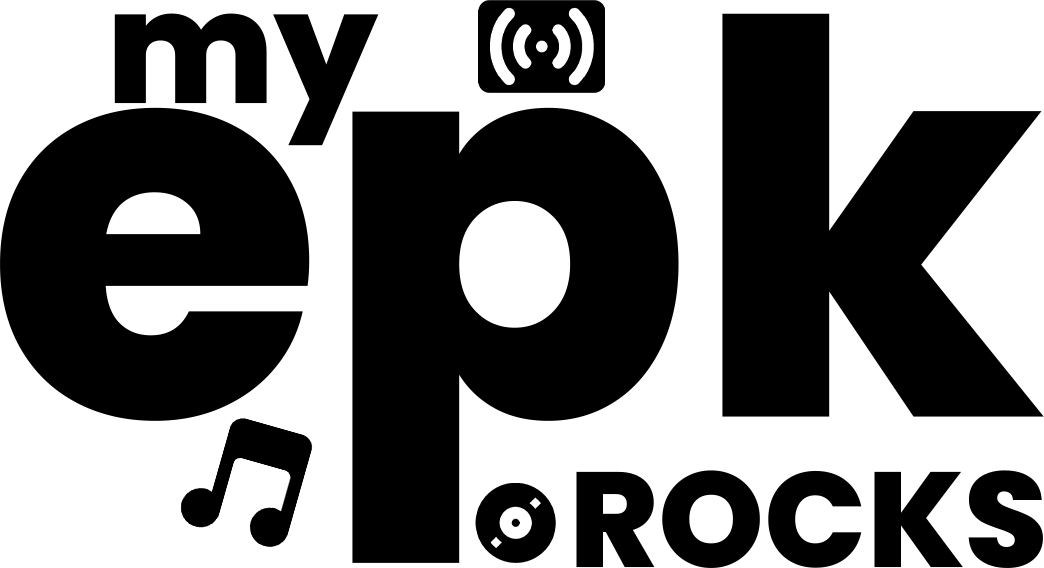Alright, music creators, let’s talk about the future. And not that “robots are gonna steal our jobs” future. I’m talking about the “holy-crap-this-is-gonna-change-everything” future of music experiences. We’re diving deep into the world of VR, AR, and holographic concerts – stuff that might sound like science fiction, but is rapidly becoming the new normal, and how you can, as a musician, tap into it.
Forget about just selling albums and doing local gigs (though those are still important!). We’re talking about creating experiences that transport your fans, connect them with your music in ways they never thought possible, and open up entirely new revenue streams. Sound good? Let’s get into it.
Beyond the Stage: Why Immersive Experiences Matter Now
For years, the music industry has been… well, evolving (some might even say struggling) to keep up with the digital age. Piracy, streaming services, and the sheer volume of music being released every day has made it harder than ever to stand out and make a sustainable living.
But here’s the thing: people still crave connection. They crave experiences. They want more than just to passively listen to a song. They want to feel it. That’s where immersive experiences come in. They’re not just about listening; they’re about being there.
Think about it: Why do people shell out crazy money to go to Coachella or Lollapalooza? It’s not just about the music. It’s about the atmosphere, the community, the feeling of being part of something bigger. Immersive experiences take that feeling and amp it up to eleven.
Before we go further, let’s define our terms so we’re all on the same page:
- Virtual Reality (VR): This is the full-immersion deal. You put on a headset (like an Oculus Quest 2 or a Valve Index) and you’re transported to a completely different world. Your physical environment is completely blocked out, and you interact with a digital environment.
- Augmented Reality (AR): This is where the digital world overlays your real world. Think Pokemon GO, or those Snapchat filters that put bunny ears on your head. In music, this could mean seeing a virtual band playing in your living room, or unlocking exclusive content by pointing your phone at a concert poster.
- Holographic Concerts: This is the one that still feels a bit like science fiction, but it’s happening! This involves projecting a realistic, three-dimensional image of a performer (either living or deceased) onto a stage. Think Tupac at Coachella, but way more advanced.
VR: Your Music, Their World
VR offers the most immersive potential of the three. Here’s how you can use it:
-
VR Concerts: Imagine your fans putting on a headset and being transported to a virtual venue where you’re performing. You could design the venue to be anything you want: a futuristic space station, an underwater city, a giant forest. The possibilities are endless. Check out platforms like VRrOOm to see how they are making waves in the VR events world.
- Interactive Elements: VR concerts can be more than just passive viewing experiences. You can incorporate interactive elements that allow fans to affect the show. Maybe they can vote on the next song, trigger special effects, or even join you on stage as a virtual avatar.
- Behind-the-Scenes Access: Give fans access to backstage areas, rehearsals, or even your recording studio. VR allows them to get closer to you and your music than ever before.
-
Music Videos in VR: Forget about watching a music video on a screen. With VR, you can create a fully immersive music video that puts your fans inside the song.
- 360-Degree Experiences: Create a 360-degree video that allows viewers to look around and explore the environment while they listen to your music. Bands like Gorillaz have been experimenting with this for years, offering glimpses into their fictional world.
- Interactive Storytelling: Let viewers make choices that affect the story of the music video. This could lead to multiple endings and a highly engaging experience.
-
VR Music Education: Teach fans how to play your songs using VR. You could create interactive lessons that guide them through chords, riffs, and rhythms.
- Gamified Learning: Turn music education into a game. Award points for correct notes, unlock new songs, and compete with other players.
AR: Enhancing Reality with Your Music
AR is a bit more accessible than VR because it doesn’t require a dedicated headset. Most people already have a smartphone or tablet that can run AR apps. Here’s how you can use it:
-
AR Concert Experiences: Use AR to enhance the live concert experience.
- Stage Overlays: Fans can point their phones at the stage and see augmented reality elements overlaid on the performance. This could include visual effects, lyrics, behind-the-scenes information, or even virtual merchandise.
- Interactive Setlists: Create an AR-powered setlist that allows fans to vote on the next song or request specific tracks.
- Social Sharing: Make it easy for fans to share their AR experiences on social media. This can help you reach a wider audience and promote your music.
-
AR Music Marketing: Use AR to create engaging marketing campaigns.
- Scavenger Hunts: Hide AR markers around your city that unlock exclusive content when scanned. This could include unreleased tracks, behind-the-scenes footage, or discounts on merchandise.
- Interactive Album Art: Bring your album art to life with AR. Fans can scan the cover and see animations, hear snippets of music, or even play mini-games.
- Virtual Merch: Let fans try on virtual merchandise using AR. This could include t-shirts, hats, or even virtual instruments.
-
AR Music Creation: Explore using AR to help you create music.
- Virtual Instruments: Use AR to play virtual instruments in your living room. This could be a fun way to experiment with new sounds and create music on the go.
- AR Music Production Tools: Visualize your music production process with AR. You could see virtual waveforms, synthesizers, and effects processors overlaid on your real-world equipment.
Holographic Concerts: The Next Frontier of Live Performance
Holographic concerts are still in their early stages, but they have the potential to revolutionize the live music experience. While the tech is still quite expensive and technically demanding, it’s getting more accessible and affordable every year.
-
Performing as a Hologram: Imagine being able to perform in multiple locations at the same time as a hologram. This could open up new opportunities to reach fans who can’t travel to see you live. ABBA’s Voyage is a prime example of this, and it’s an amazing experience for fans.
- Reach a Global Audience: Perform for fans all over the world without ever leaving your home.
- Reduce Travel Costs: Eliminate the need for expensive tours and travel arrangements.
- Create Unique Visual Experiences: Use holographic technology to create stunning visual effects that are impossible to achieve with traditional stage setups.
-
Resurrecting Deceased Artists: This is a controversial topic, but it’s something that’s already happening. Holographic concerts of deceased artists like Tupac and Ronnie James Dio have been performed to mixed reviews. While some fans find it disrespectful, others see it as a way to keep the music of their favorite artists alive. BASE Hologram has already brought several famous artists back from the dead through the use of Holograms.
- Preserve Musical Legacies: Allow future generations to experience the music of iconic artists.
- Generate Revenue for Estates: Create new revenue streams for the estates of deceased artists.
Making It Happen: Practical Tips for Artists
Okay, so all of this sounds amazing, but how do you actually make it happen? Here are some practical tips for incorporating VR, AR, and holographic elements into your music career:
- Start Small: You don’t have to create a full-blown VR concert right away. Start with something simple, like an AR-enhanced album cover or a 360-degree music video. This will allow you to experiment with the technology and learn what works best for you and your audience.
- Collaborate: Don’t try to do everything yourself. Partner with developers, designers, and other creatives who have experience with VR, AR, and holographic technology. There are tons of talented people out there who are eager to work with musicians on innovative projects.
- Focus on the Experience: The technology is just a tool. The most important thing is to create a compelling and engaging experience for your fans. Don’t just use VR or AR for the sake of it. Make sure it enhances your music and connects with your audience on an emotional level.
- Promote Your Experiences: Let your fans know about your VR, AR, and holographic projects. Use social media, email marketing, and your website to spread the word.
- Monetize Strategically: There are many ways to monetize immersive experiences. You can sell tickets to VR concerts, offer exclusive content through AR apps, or partner with brands to create sponsored experiences.
Navigating the Challenges:
Like any new technology, VR, AR, and holographic concerts come with their own set of challenges:
- Cost: Developing high-quality immersive experiences can be expensive. You’ll need to invest in the right equipment, software, and talent. However, the costs are coming down rapidly, and there are many funding opportunities available for artists who are working on innovative projects.
- Technology Barriers: Not everyone has access to VR headsets or AR-enabled devices. This can limit the reach of your experiences. However, VR headsets are becoming more affordable and accessible, and most people already have a smartphone that can run AR apps.
- Content Creation: Creating compelling VR, AR, and holographic content requires a different skillset than creating traditional music videos or live performances. You’ll need to learn new techniques for shooting, editing, and designing interactive experiences.
- Ethical Considerations: Holographic concerts of deceased artists raise ethical questions about consent, authenticity, and the potential for exploitation. It’s important to consider these issues carefully before embarking on a project that involves resurrecting a deceased performer.
The Future is Immersive (and Musical!)
The world of immersive music experiences is still in its early stages, but it’s clear that it has the potential to transform the music industry. By embracing VR, AR, and holographic technology, you can connect with your fans in new and meaningful ways, create innovative new revenue streams, and push the boundaries of what’s possible with music.
Don’t be afraid to experiment, take risks, and explore the possibilities. The future of music is immersive, and it’s waiting for you to create it. So, put on your thinking cap (or your VR headset), grab your instrument (or your digital audio workstation), and get ready to rock the metaverse!
Resources to Get You Started:
- Unity and Unreal Engine: These are the leading game engines used to create VR and AR experiences. They offer a wide range of tools and resources for developers. Unity , Unreal Engine
- ARKit and ARCore: These are the AR development platforms from Apple and Google, respectively. They allow you to create AR apps for iOS and Android devices. ARKit , ARCore
- VRrOOm: The platform that is changing VR events forever. VRrOOm
So, there you have it. A crash course in the world of VR, AR, and holographic concerts. Hopefully, this has sparked some ideas and inspired you to start exploring the possibilities. Now go out there and create something amazing! The future of music is in your hands (or on your head, if you’re wearing a VR headset). Good luck!


